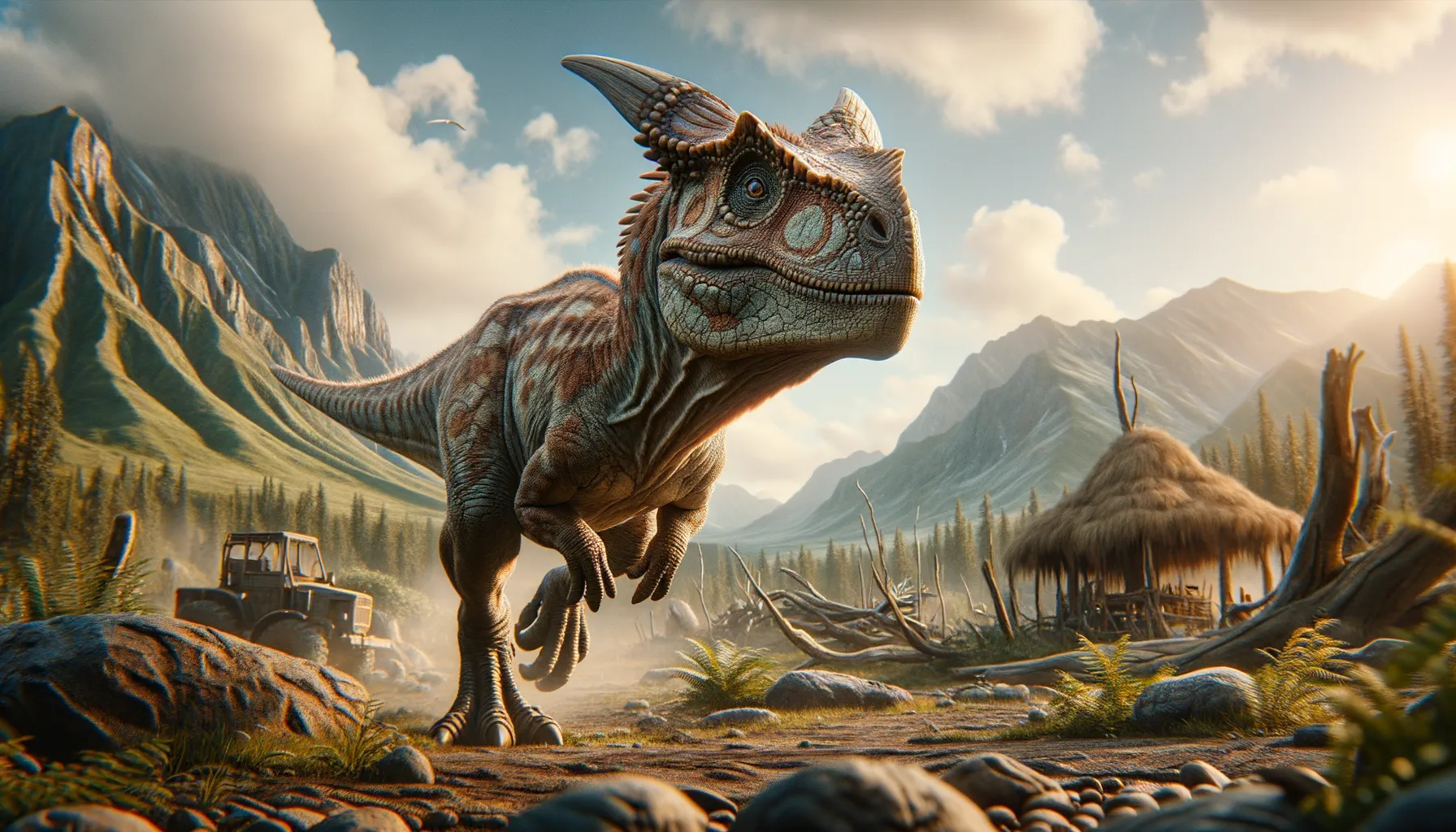
Bagaceratops
A tiny titan with a mighty history.
Period
Cretaceous
Length
Roughly 1 meter long.
Height
Approximately 60 centimeters tall.
Weight
Around 30 kilograms.
Bagaceratops was a small, plant-eating dinosaur that roamed the Earth during the Late Cretaceous period. Its name means 'small horned face,' reflecting its distinct, though small, facial horns and frill. This dinosaur is known for being one of the smaller members of the ceratopsian family. Found primarily in Mongolia, Bagaceratops offers a fascinating glimpse into the diversity of dinosaur life in prehistoric Asia.
Diet
Bagaceratops was herbivorous, grazing on a variety of plants. It likely fed on low-growing vegetation such as ferns and cycads. This diet was typical for ceratopsians of its size, allowing it to survive in its harsh environment.
Hunting
As a herbivore, Bagaceratops did not hunt other animals. Instead, it foraged for plant materials. Its beak-like mouth was adapted for cutting through tough vegetation.
Environmental challenges
Bagaceratops faced challenges such as predation from larger carnivorous dinosaurs. It also had to compete with other herbivores for limited food resources. Climate changes could affect vegetation growth, impacting its available diet. Despite these challenges, Bagaceratops was able to thrive during its time period.
Speed
Relatively slow, moving at a leisurely pace.
Lifespan
Approximately 10 to 20 years based on current estimates.
First discovery
Found in the early 1970s in Mongolia.
Fun Facts
- Bagaceratops was a small dinosaur that lived about 80 million years ago during the Late Cretaceous period.
- Its name means 'small horned face,' which refers to the tiny horn it had on its snout.
- Bagaceratops was a herbivore, and its diet likely consisted of plants and tough vegetation.
- It was about the size of a large dog, making it relatively small compared to some other dinosaurs.
- Bagaceratops belonged to a group of dinosaurs called ceratopsians, which are known for their beaks and frills.
- Fossils of Bagaceratops have been primarily found in the Gobi Desert in Mongolia.
- Unlike its larger relatives like Triceratops, Bagaceratops did not have large horns or a big frill.
Growth and Development
Bagaceratops likely hatched from eggs, similar to other ceratopsians. Young Bagaceratops would have been particularly vulnerable to predators and relied on rapid growth for early survival. Growth rates would be dictated by available nutrition and environmental conditions. Over several years, they would reach maturity, contributing to their lineage.
Habitat
Living in what is now Mongolia, Bagaceratops inhabited arid to semi-arid environments with sparse vegetation. It occupied regions that had seasonal variations, impacting food availability. Its habitat would include open plains and areas with some shrub cover. Adaptability was key to thriving in these diverse conditions.
Interaction with other species
Bagaceratops shared its environment with a variety of other dinosaurs, including predators like theropods. While relatively small, its frill may have been used for communication or defense against threats. It might have lived in small groups, providing some level of protection. Interactions with other herbivores could involve competition for food resources.
Natural lifespan
Bagaceratops could naturally live up to two decades under ideal conditions.
Reproduction
Bagaceratops reproduced by laying eggs, possibly in communal nesting sites. The eggs would need a stable environment to incubate successfully. Parental care post-hatching is uncertain, but young were likely precocial, meaning they were relatively mature and mobile shortly after birth.
Social behaviour
Bagaceratops may have lived in small groups to enhance foraging efficiency and protection. Social structure within these groups is not well understood but may have been relatively simple due to limited necessity for complex social strategies. Group living might have also facilitated communal nesting and defense against predators.
Fossil locations
Fossils of Bagaceratops have been primarily found in the Barun Goyot Formation in Mongolia. The region where it was discovered is known for a rich abundance of dinosaur remains from the Late Cretaceous period, providing insights into the terrestrial ecosystems of that time. These finds have been crucial in understanding the diversity of Asian ceratopsians.
